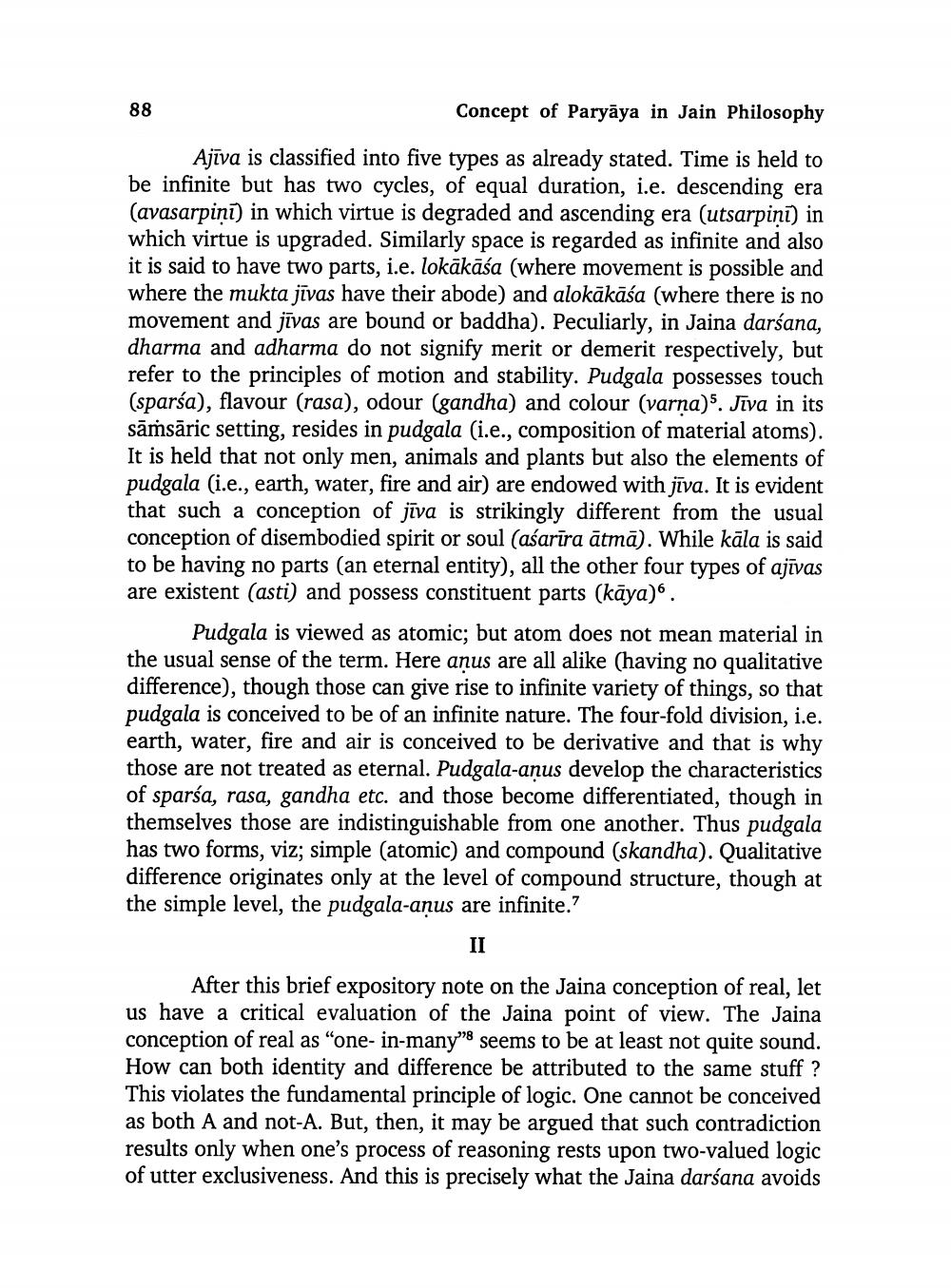________________ 88 Concept of Paryaya in Jain Philosophy Ajiva is classified into five types as already stated. Time is held to be infinite but has two cycles, of equal duration, i.e. descending era (avasarpini) in which virtue is degraded and ascending era (utsarpini) in which virtue is upgraded. Similarly space is regarded as infinite and also it is said to have two parts, i.e. lokakasa (where movement is possible and where the mukta jivas have their abode) and alokakasa (where there is no movement and jivas are bound or baddha). Peculiarly, in Jaina darsana, dharma and adharma do not signify merit or demerit respectively, but refer to the principles of motion and stability. Pudgala possesses touch (sparsa), flavour (rasa), odour (gandha) and colour (varna)5. Jiva in its samsaric setting, resides in pudgala (i.e., composition of material atoms). It is held that not only men, animals and plants but also the elements of pudgala (i.e., earth, water, fire and air) are endowed with jiva. It is evident that such a conception of jiva is strikingly different from the usual conception of disembodied spirit or soul (asarira atma). While kala is said to be having no parts (an eternal entity), all the other four types of ajivas are existent (asti) and possess constituent parts (kaya)'. Pudgala is viewed as atomic; but atom does not mean material in the usual sense of the term. Here anus are all alike (having no qualitative difference), though those can give rise to infinite variety of things, so that pudgala is conceived to be of an infinite nature. The four-fold division, i.e. earth, water, fire and air is conceived to be derivative and that is why those are not treated as eternal. Pudgala-anus develop the characteristics of sparsa, rasa, gandha etc. and those become differentiated, though in themselves those are indistinguishable from one another. Thus pudgala has two forms, viz; simple (atomic) and compound (skandha). Qualitative difference originates only at the level of compound structure, though at the simple level, the pudgala-anus are infinite.? After this brief expository note on the Jaina conception of real, let us have a critical evaluation of the Jaina point of view. The Jaina conception of real as "one- in-many's seems to be at least not quite sound. How can both identity and difference be attributed to the same stuff ? This violates the fundamental principle of logic. One cannot be conceived as both A and not-A. But, then, it may be argued that such contradiction results only when one's process of reasoning rests upon two-valued logic of utter exclusiveness. And this is precisely what the Jaina darsana avoids




